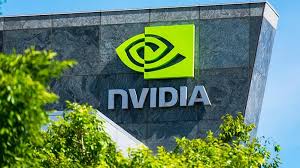National News
Nvidia's Market Position: A Quantitative Examination of Prevailing Bear Narratives
The Western Staff

Beyond the Rhetoric: An Evidence-Based Analysis of Nvidia's Market Standing
In the contemporary financial discourse surrounding Nvidia, objectivity has increasingly become a casualty of hyperbole. The conversation is characterized by soaring optimism on one side and dire warnings of an imminent collapse on the other, creating a volatile and emotionally charged environment for investors and industry observers. This analysis will step back from the heated rhetoric and speculative forecasts. Its purpose is to provide a clinical, data-driven examination of the primary bearish arguments currently being circulated, weighing them against statistical realities, historical context, and the fundamental mechanics of the artificial intelligence industry. We will assess the narratives not on their emotional impact, but on their empirical merit.
Deconstructing Competitive Threats: The Fallacy of Hardware Equivalency
A persistent narrative suggests that Nvidia’s market dominance is fragile, predicated on the notion that key customers are actively seeking cheaper hardware alternatives. The two most cited examples are reports of OpenAI exploring Google’s TPUs and the forecast of AMD 'closing the gap' by 2026. While superficially compelling, this perspective fundamentally misinterprets the source of Nvidia’s competitive advantage.
Nvidia’s market position is not solely a function of its GPU hardware; it is the result of a meticulously constructed, deeply entrenched software and developer ecosystem built over more than 15 years. The CUDA (Compute Unified Device Architecture) platform is the critical variable that this narrative overlooks. With an estimated 4 million developers, a vast library of pre-built applications, and deep integration into every major machine learning framework (like TensorFlow and PyTorch), CUDA represents a formidable barrier to entry.
For a client like OpenAI, the decision to shift workloads is not a simple hardware swap. It involves a costly and high-risk migration process, requiring specialized talent to rewrite and re-optimize years of code for a new architecture like Google’s TPU or AMD’s ROCm. Therefore, the more accurate interpretation is that large-scale clients are engaging in strategic multi-sourcing—a standard operational practice to diversify supply chains and test niche applications—rather than a wholesale abandonment of the market’s core platform. The switching costs, measured in time, talent, and potential performance degradation, remain prohibitively high for a complete transition.
Similarly, the argument that AMD will 'close the gap' simplifies a complex dynamic. While AMD’s MI300X is a formidable product, it enters a market where Nvidia holds over 80% share of the data center AI accelerator space. The 'gap' is not merely a hardware performance metric; it is a chasm in ecosystem maturity, software support, and developer adoption. As the AI market itself expands at a compound annual growth rate (CAGR) projected to exceed 35% through 2030, Nvidia is not static. Its continuous innovation cycle (e.g., the Blackwell platform succeeding Hopper) means it is capturing the dominant share of a rapidly growing pie. The narrative of a closing gap discounts Nvidia's own exponential rate of progress.
Statistical Noise vs. Signal: Interpreting Capital Flows
Another high-impact narrative focuses on the sale of 1.4 million Nvidia shares by billionaire Philippe Laffont’s firm, presented as a definitive signal that 'smart money' is exiting. This tactic exploits a common cognitive bias: anchoring on a single, dramatic data point while ignoring the larger statistical universe.
From an analytical standpoint, a single transaction by one fund is statistically insignificant when assessing the overall health of a trillion-dollar company. High-net-worth individuals and institutional funds rebalance portfolios for a multitude of reasons, including diversification mandates, tax-loss harvesting, or liquidity requirements, none of which necessarily reflect a bearish outlook on the underlying asset.
To derive a meaningful signal, one must analyze aggregate data. As of early 2024, institutional ownership of Nvidia remains robust, accounting for over 65% of outstanding shares. This figure represents broad-based conviction from hundreds of a sophisticated funds. Furthermore, one must contrast a single sale with the company's own capital allocation strategy. Nvidia's significant and ongoing investment in R&D—consistently over 15% of revenue—and strategic acquisitions like CentML signal strong internal confidence in its long-term growth trajectory. These corporate actions are far more powerful indicators of future performance than the portfolio adjustments of a single external actor.
The Cisco Comparison: A Flawed Historical Analogy
The comparison of Nvidia in 2024 to Cisco Systems in 2000 has been reintroduced to frame the current AI boom as a repeat of the dot-com bubble. This historical parallel is analytically weak as it ignores the fundamental differences in the nature of the demand, the business models, and the economic utility of the products sold.
Nature of Demand: Cisco sold physical network infrastructure (routers, switches). The demand was for a one-time build-out of internet connectivity. Once the fiber was laid and the routers were installed, demand drastically decelerated, leaving a glut of capacity. Nvidia, in contrast, sells computational power. AI is not a one-time build-out; it is a continuous, escalating computational expense. Models require constant training on new data and, more importantly, consume immense power during inference (the process of using the AI). The demand is recurring and grows with the complexity and adoption of AI services.
Economic Utility: The services running on Cisco's infrastructure in 2000 were often pre-revenue or lacked viable business models. The demand was speculative. Today, the customers buying Nvidia's GPUs—hyperscalers like Microsoft, Google, and Amazon—are deploying them to power highly profitable cloud services and AI products that generate immediate and substantial revenue. The ROI on computational hardware is direct and quantifiable.
Market Expansion: The dot-com build-out was primarily a corporate and telecommunications phenomenon. The AI revolution is broader, encompassing not just enterprises but also a new, massive customer class: Sovereign AI. Nations across the globe are now purchasing tens of thousands of GPUs to build national AI infrastructure, a durable demand driver that did not exist in the Cisco era.
Conclusion: Differentiating a Secular Shift from a Cyclical Bubble
Finally, the overtly hostile narrative that 'The Music Is About To Stop' presupposes that the AI market has reached its peak. The data indicates the opposite. We are in the early stages of a secular shift in computing, moving from CPU-centric to accelerated computing. Market penetration of AI within enterprises remains in the low double-digits, indicating a vast runway for growth.
An objective analysis of the available evidence leads to a clear set of conclusions:
- Nvidia’s competitive moat is fortified by a software and developer ecosystem that creates high switching costs, a factor that simple hardware comparisons fail to account for.
- Negative narratives based on isolated stock sales or flawed historical analogies do not withstand rigorous statistical and contextual scrutiny.
- The demand for AI computation is fundamentally different from past technology cycles—it is recurring, revenue-generating for customers, and expanding into new global markets like Sovereign AI.
While market sentiment will inevitably fluctuate, the underlying structural drivers supporting Nvidia's position remain exceptionally strong. The data suggests that we are not witnessing the peak of a bubble, but rather the foundational build-out of a new, multi-decade era of computation.


